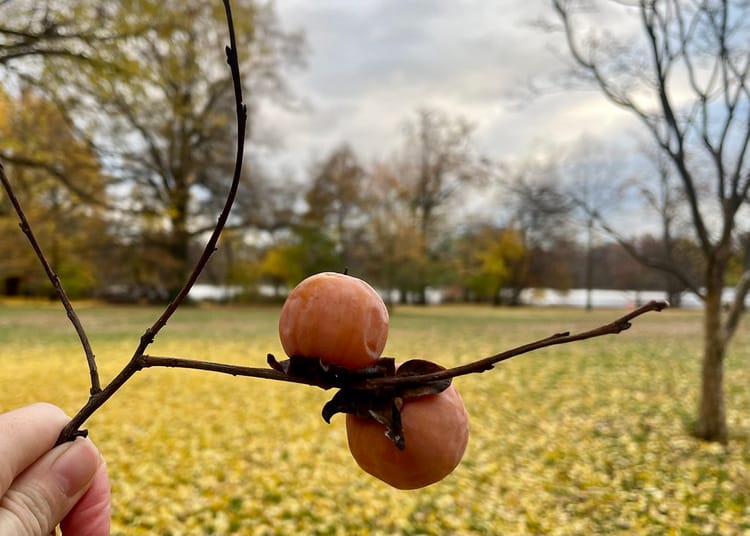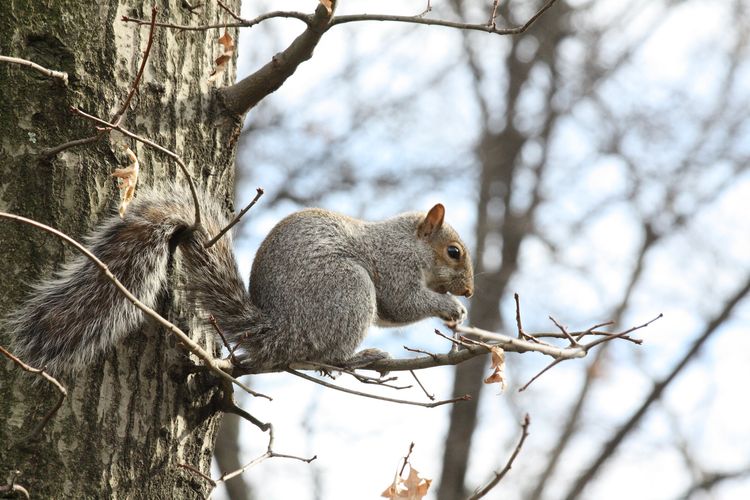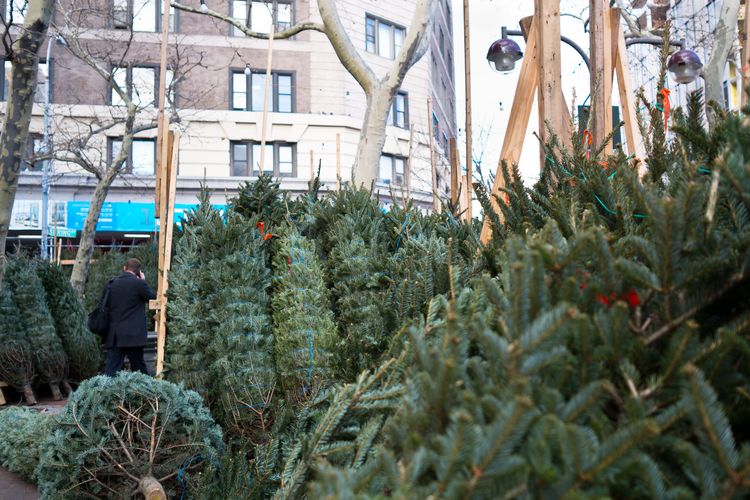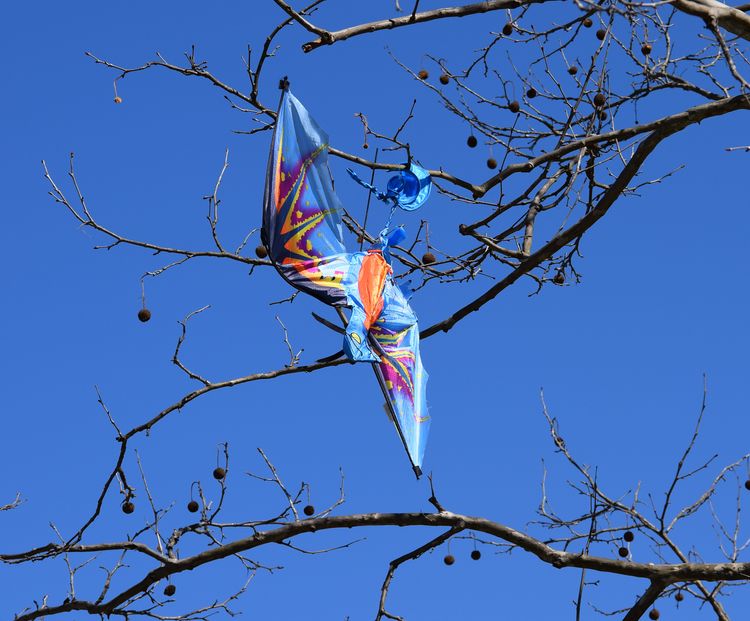A Tapestry of Trees at Your Feet
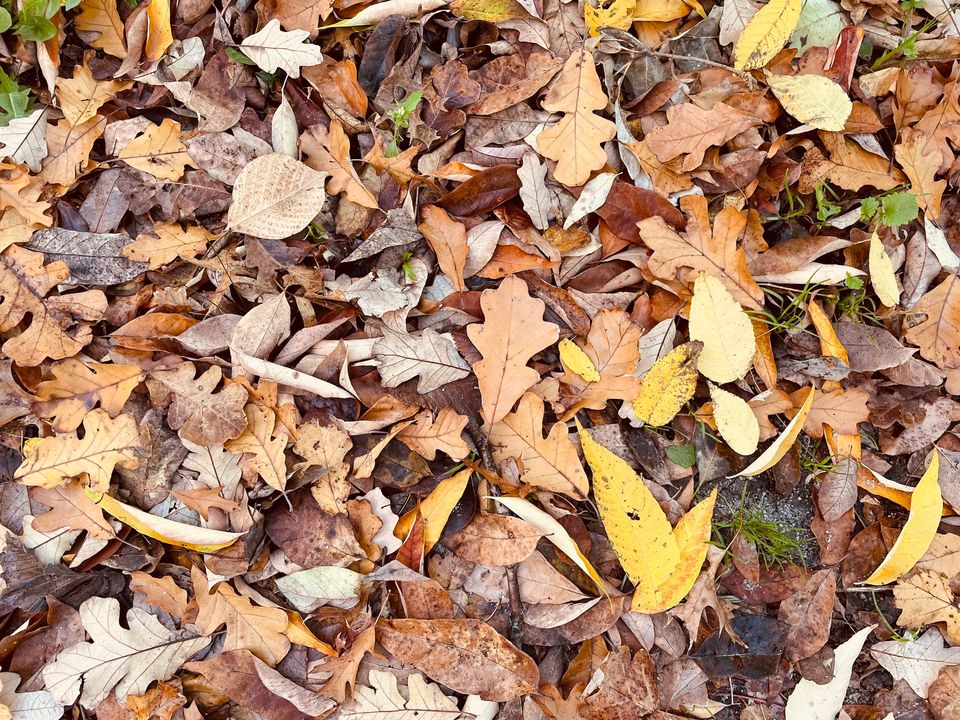
Midway through fall, there is a tapestry of local biodiversity under your feet. The colors in the trees are still enchanting, but look down. What can you spot in the layers of leaves in the park or the piles that have heaped in the storm drain? Did you know there was a ginkgo tree near you? There are its golden fan-shaped leaves. Maybe there are some scarlet, handlike Japanese maple leaves standing out against some tawny oak leaves. Pinecones and acorns, too, are scattered around, being fetched by eager squirrels. Notice how it all changes as you walk through a neighborhood or park.
There are about 5.2 million trees in New York City and although there are some precolonial fragments of forest, most were chosen and planted for their beauty, urban toughness, shade, or quick growth. There are districts of the ubiquitous London plane trees and old American elm holdouts that survived the ravaging of Dutch elm disease. It can be hard to identify individual species when walking below them in the summer while everything is flourishing and green. Take advantage of this ephemeral autumn archive and remember what you see, and wait for those bright leaves to return in spring.
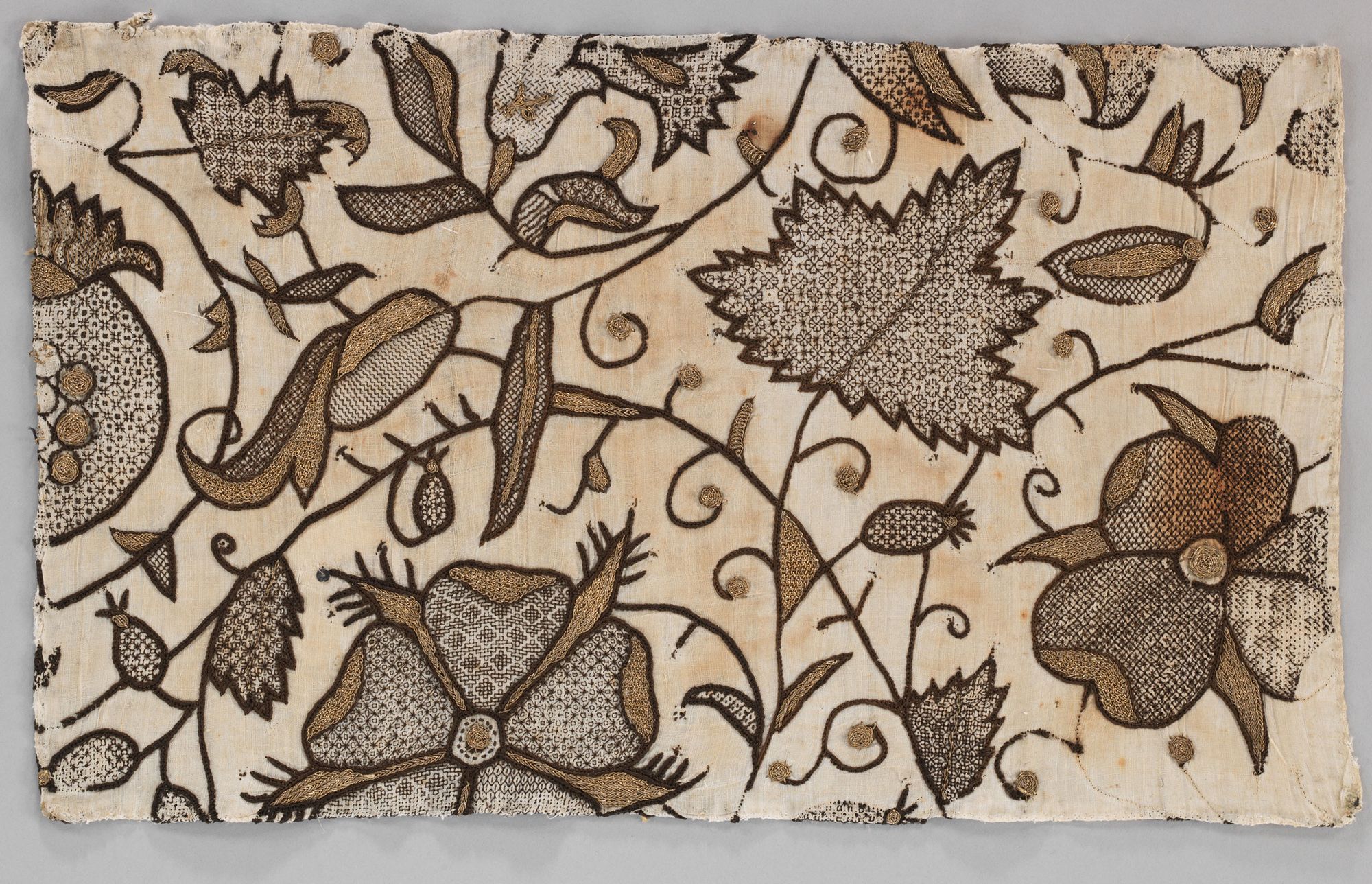
- Do you have a greenspace under your care covered with a carpet of fallen leaves? Don’t be so eager to rake them up; their decay can instill the soil with nutrients and provide a fall and winter refuge for insects and small mammals.
- One of the city’s most iconic leaves is on the NYC Parks logo. It is frequently identified as a London plane tree, appropriate as it abounds in local parks. But the truth is more fuzzy. When and where the logo was designed are unclear, with it first appearing on letterhead in 1934. In addition to the London plane, it has been called a maple, sycamore, and sycamore maple over the years. As NYC Parks states: “It’s probably unlikely that any real leaf was ever emulated; graphic designers generally prize aesthetics over accuracy.”
- Want to carry forward fall’s reminder of life’s cycles of life and death? Try out the Victorian craft of skeleton leaves! Phantom Flowers, a treatise on the art of producing skeleton leaves (1864) has over 100 pages of instructions to dry leaves into elaborate arrangements. As a haunting included poem goes: “They are spirits of flowers that blossomed and died / Long since in the garden—its beauty and pride; / Yet they rise from corruption, in robes new and bright, / As vision-like phantoms, all spotless and white.”
